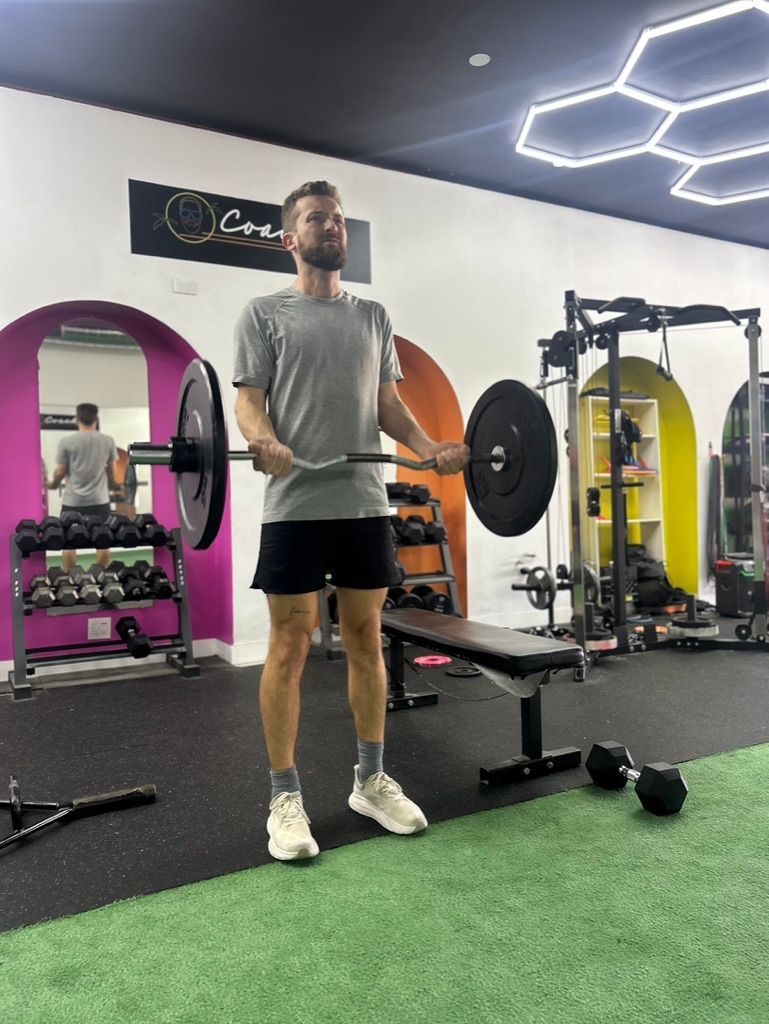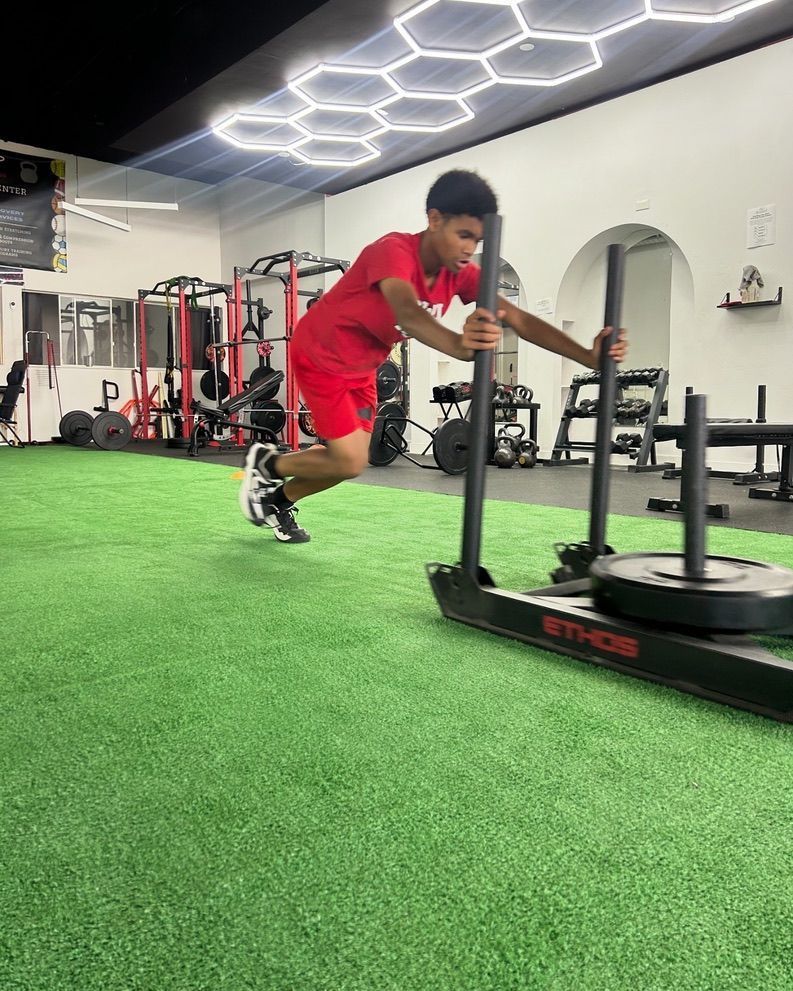The Truth About Cold Plunges: Boost Recovery, Energy, and Mental Clarity
Brandon Wolucka • May 28, 2025
❄️ Cold Plunge Benefits: What the Research Says

💥 Enhanced Power & Performance
A study showed that the cold plunge group had significantly better power—that means explosive movements like sprinting and jumping—24 hours after exercise compared to a control group. Perfect if you’ve got another competition or workout coming up soon.
🧊 Fewer Sick Days
Adding 30-90 seconds of cold showering to your routine? One group saw 29% fewer sick days than those who stuck to warm showers. That’s a huge win for immune support.
🔥 Metabolic Boost
During a cold plunge, metabolism has been measured to increase by up to 350%. This can aid in fat burning and overall energy expenditure.
🩺 Blood Sugar & Mood Improvements
Cold plunges have been linked to better blood sugar regulation, along with decreases in depression, fatigue, anger, tension, and confusion. At the same time, participants reported increases in vigor and self-esteem. Basically: more energy, more positivity.
🏋️♂️ What Cold Plunges Don't
Improve
While the benefits are impressive, cold plunges aren’t a cure-all.
❌ No significant improvements in strength or endurance
were seen in the cold plunge group at any time from 24 to 72 hours post-exercise compared to controls.
⚠️ Cold plunging immediately after intense exercise can actually reduce muscle growth and strength gains. Something to keep in mind if building muscle is your priority.
⏰ When Should You Cold Plunge?
It all comes down to your goals:
To build strength or muscle:
👉 Plunge before your workout or on a separate rest day. Avoid right after training.
To reduce soreness:
👉 Plunge right after exercise to calm inflammation and feel better faster.
To recover quickly for back-to-back events:
👉 Got a tournament or competition within 1–2 days? Plunge immediately post-exercise to boost recovery and power.
For endurance athletes:
👉 You can plunge anytime—before or after—without worry.
Final Thoughts
Cold plunges aren't just a trendy challenge—they’re a legitimate tool for recovery, energy, and mental clarity. Just be smart about your goals and when you plunge. Whether you're looking to bounce back faster, stay mentally sharp, or reduce inflammation, adding cold exposure could be the edge you didn’t know you needed.


When most people think of strength training, they imagine bulging muscles, heavy barbells, and grueling gym sessions. But the truth is, strength training is one of the most effective and accessible forms of exercise for everyone—regardless of age, gender, or fitness level. Whether you're a beginner or a seasoned athlete, incorporating strength training into your routine can lead to profound improvements in your health, well-being, and quality of life. What Is Strength Training? Strength training (also known as resistance training or weight training) involves using resistance—such as free weights, resistance bands, or even your own body weight—to build muscle strength, endurance, and size. This can include exercises like squats, push-ups, deadlifts, and resistance band workouts. Now, let’s break down the many science-backed benefits of strength training, including how it boosts performance and helps athletes stay on the field longer. 1. Builds Muscle Mass and Strength Strength training helps increase muscle size and strength, which improves your ability to perform everyday tasks and physical activities. For athletes, stronger muscles mean enhanced performance in virtually every sport—faster sprints, higher jumps, and more powerful throws. 2. Enhances Athletic Performance Athletes across all sports benefit from strength training. It improves: Speed and power: Exercises like squats and Olympic lifts train explosive strength, crucial for sprinting and jumping. Agility and coordination: Strength work enhances neuromuscular control, helping athletes change direction quickly and with precision. Sport-specific endurance: Targeted training improves muscular stamina for longer-lasting performance on the field, court, or track. Strength training can be tailored to the specific movement patterns, energy systems, and physical demands of each sport—making it a key tool in any athlete’s training plan. 3. Reduces Risk of Injury One of the most important but overlooked benefits of strength training is injury prevention. Strong muscles, tendons, and ligaments provide better joint stability and shock absorption. This helps prevent common injuries like ACL tears, hamstring strains, and shoulder issues . For example: Strengthening the glutes and hamstrings can protect against knee injuries. Improving core strength supports better posture and spinal alignment, reducing neck and back pain. Trained tissues will recover from soft tissue injuries than untrained tissues. Meaning if you strain a muscle or roll an ankle, it will recover faster if the muscles are stronger. Studies show that athletes who include resistance training in their routine have significantly lower injury rates compared to those who don't. 4. Boosts Metabolism and Aids in Fat Loss Muscle is metabolically active tissue, meaning it burns more calories than fat —even at rest. Strength training helps increase your resting metabolic rate, making it easier to manage body composition, which is especially important for athletes looking to optimize performance weight. 5. Improves Bone Health and Joint Function Strength training is one of the best ways to improve bone density and prevent osteoporosis. Stronger bones and joints are critical for long-term athletic development and healthy aging. 6. Enhances Mental Toughness and Focus Training with resistance doesn't just strengthen your body—it sharpens your mind. Regular strength training can improve mood, decrease anxiety and depression , and build the mental discipline required to push through challenges—on and off the field. 7. Better Posture, Balance, and Mobility Strength training improves postural alignment and balance by targeting the stabilizing muscles in your core, shoulders and lower body. Most of us spend too much time hunched over a computer, texting, driving or sleeping on your side ; all things that ruin our posture.This is crucial not only for daily life but also for athletic performance, where balance and control can be the difference between winning and injury. 8. Adaptable and Time-Efficient You don’t need to spend hours in the gym to see results. With a well-designed program, you can build strength and see significant improvements in as little as 2–3 sessions per week. Whether you train at home, at a gym, or in a sports facility, strength training can be adapted to suit your lifestyle and goals. Final Thoughts Strength training is a powerhouse tool that does far more than sculpt muscles. From everyday strength and metabolic health to enhanced athletic performance and reduced injury risk for people of all ages, the benefits are wide-reaching and well-supported by science. If you're an athlete, it could be your secret weapon. If you're just starting out, it's your foundation for a stronger, healthier life. So don’t just lift for the mirror—lift for your future. Your body (and your performance) will thank you!!



Share On: